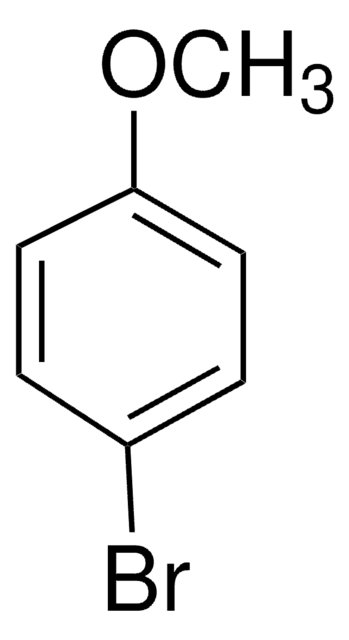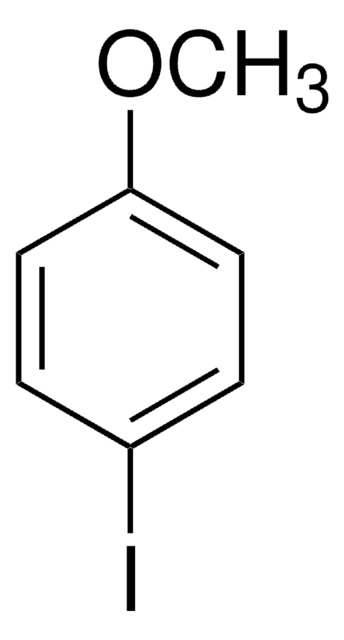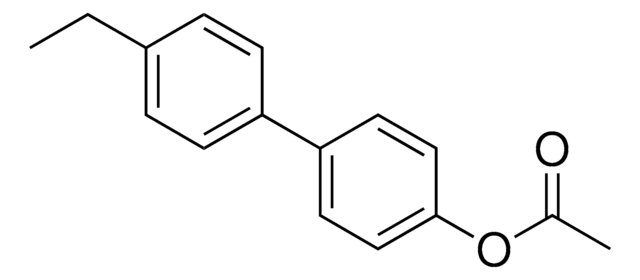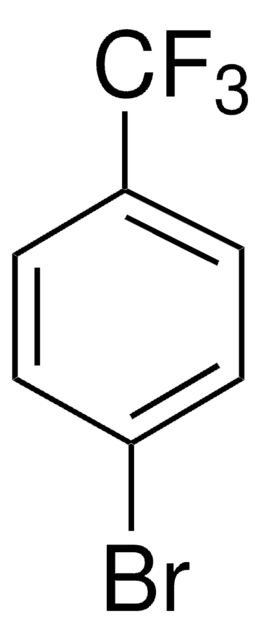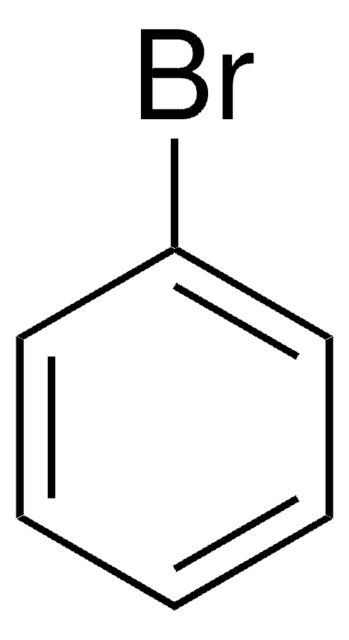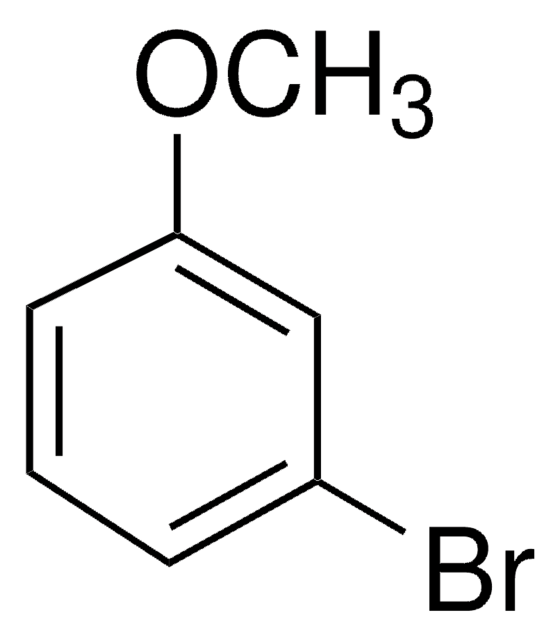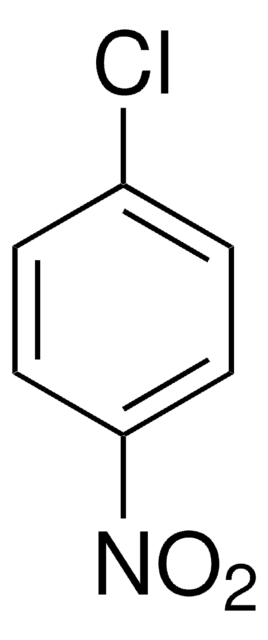Wszystkie zdjęcia(1)
Key Documents
About This Item
Wzór liniowy:
ClC6H4OCH3
Numer CAS:
Masa cząsteczkowa:
142.58
Beilstein:
1858901
Numer WE:
Numer MDL:
Kod UNSPSC:
12352100
Identyfikator substancji w PubChem:
NACRES:
NA.22
Polecane produkty
Poziom jakości
Próba
99%
Postać
liquid
współczynnik refrakcji
n20/D 1.535 (lit.)
tw
198-202 °C (lit.)
mp
−18 °C (lit.)
gęstość
1.164 g/mL at 25 °C (lit.)
ciąg SMILES
COc1ccc(Cl)cc1
InChI
1S/C7H7ClO/c1-9-7-4-2-6(8)3-5-7/h2-5H,1H3
Klucz InChI
YRGAYAGBVIXNAQ-UHFFFAOYSA-N
Szukasz podobnych produktów? Odwiedź Przewodnik dotyczący porównywania produktów
Opis ogólny
4-Chloroanisole is an electron-rich chloroarene. It undergoes Ullmann-type homocoupling catalyzed by in situ generated Pd colloids. Reaction of 4-chloroanisole with Cu(II)-smectite in n-hexane, carbon tetrachloride or dichloromethane has been studied. The nucleophilic photosubstitution reactions, photocyanation and photohydrolysis of 4-chloroanisole has been studied by time resolved spectroscopy.
This page may contain text that has been machine translated.
Kod klasy składowania
10 - Combustible liquids
Klasa zagrożenia wodnego (WGK)
WGK 3
Temperatura zapłonu (°F)
165.2 °F - closed cup
Temperatura zapłonu (°C)
74 °C - closed cup
Środki ochrony indywidualnej
Eyeshields, Gloves, type ABEK (EN14387) respirator filter
Wybierz jedną z najnowszych wersji:
Masz już ten produkt?
Dokumenty związane z niedawno zakupionymi produktami zostały zamieszczone w Bibliotece dokumentów.
Klienci oglądali również te produkty
Antonio Monopoli et al.
The Journal of organic chemistry, 75(11), 3908-3911 (2010-05-14)
An efficient and highly sustainable Ullmann-type homocoupling of bromo- and chloroarenes, including the more challenging electron-rich chloroarenes (e.g., 4-chloroanisole), catalyzed by in situ generated Pd colloids, is carried out in aqueous medium under relatively mild conditions (temperatures ranging from 40
Laser spectroscopic study of the nucleophilic photosubstitution of 4-chloroanisole and 4-fluoroanisole in aqueous solutions.
Lemmetyinen H, et al.
Journal of Photochemistry, 30(3), 315-338 (1985)
Single electron transfer mechanism of oxidative dechlorination of 4-chloroanisole on copper (II)-smectite.
Govindaraj N, et al.
Environmental Science & Technology, 21(11), 1119-1123 (1987)
Qingqing Mei et al.
Science advances, 4(5), eaaq0266-eaaq0266 (2018-05-26)
Ether bond activation is very interesting because the synthesis of many valuable compounds involves conversion of ethers. Moreover, C-O bond cleavage is also very important for the transformation of biomass, especially lignin, which abundantly contains ether bonds. Developing efficient methods
Nasz zespół naukowców ma doświadczenie we wszystkich obszarach badań, w tym w naukach przyrodniczych, materiałoznawstwie, syntezie chemicznej, chromatografii, analityce i wielu innych dziedzinach.
Skontaktuj się z zespołem ds. pomocy technicznej